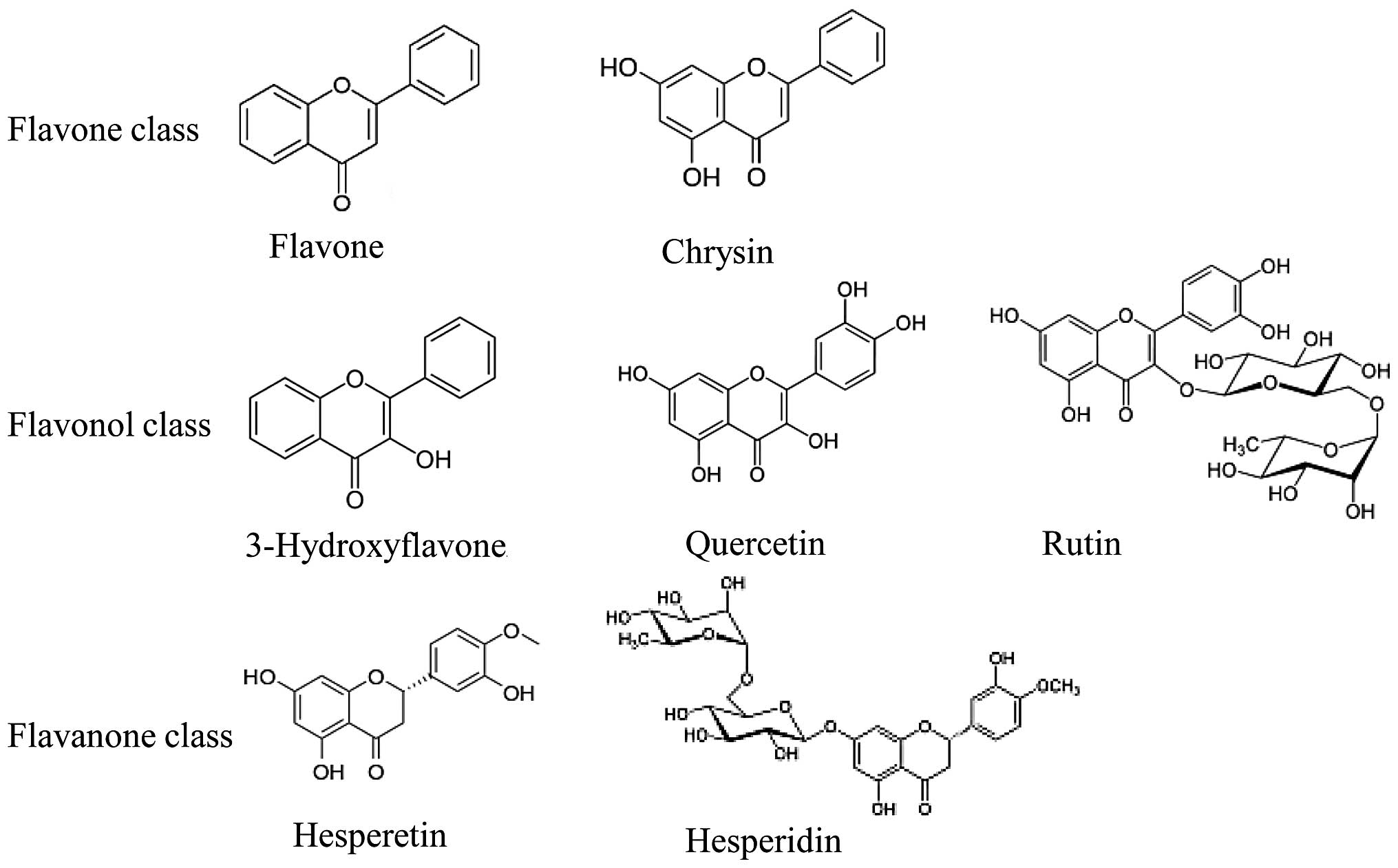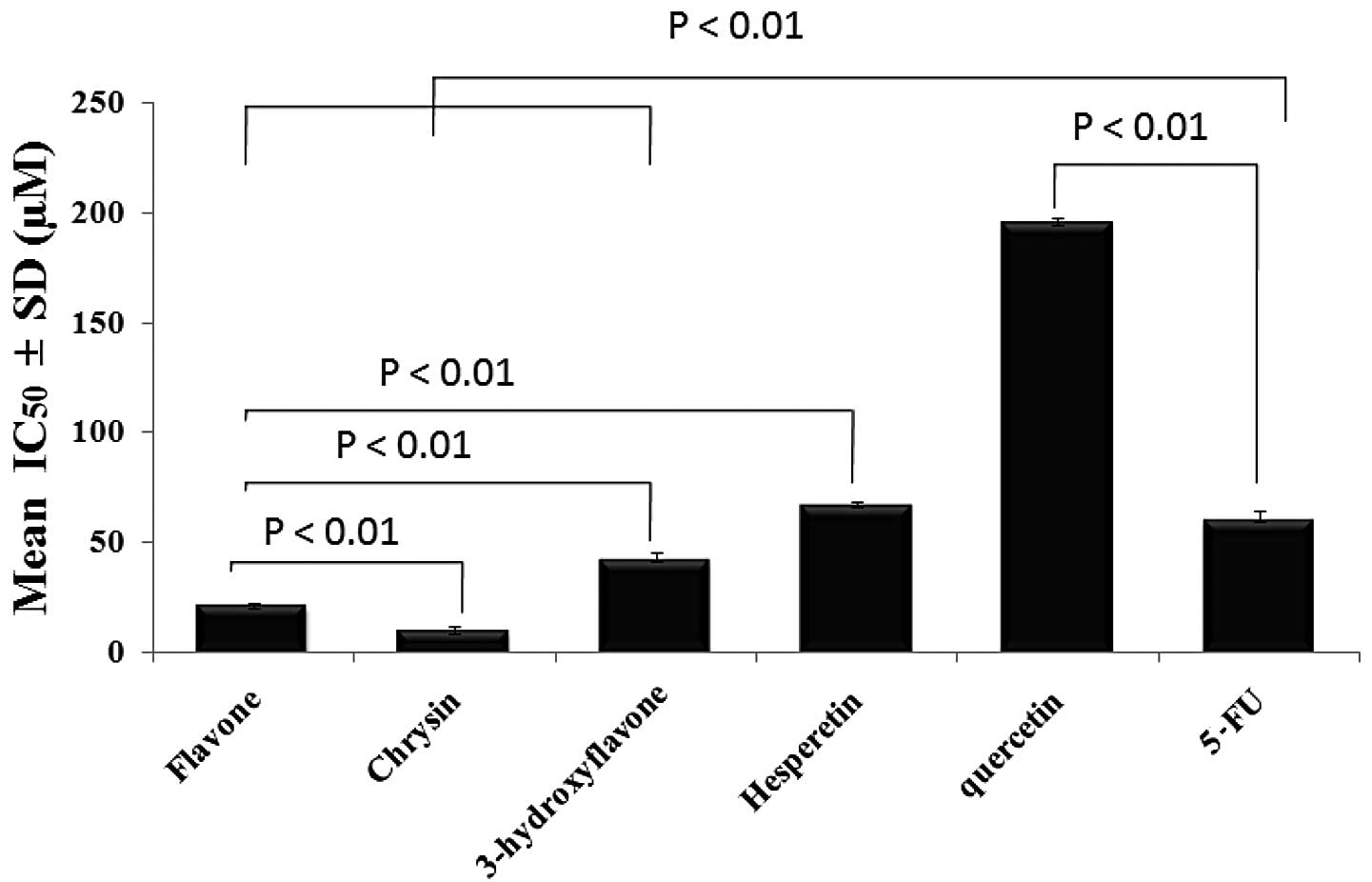|
1
|
Greenlee RT, Hill-Harmon MB, Murray T and
Thun M: Cancer statistics, 2001. CA Cancer J Clin. 51:15–36. 2001.
View Article : Google Scholar
|
|
2
|
Dhorajiya BD, Ibrahim AS, Badria FA and
Dholakiya BZ: Design and synthesis of novel nucleobase-based
barbiturate derivatives as potential anticancer agents. Med Chem
Res. August;2013.1 View Article : Google Scholar
|
|
3
|
Quasar Collaborative Group. Gray R,
Barnwell J, McConkey C, Hills RK, Williams NS and Kerr DJ: Adjuvant
chemotherapy versus observation in patients with colorectal cancer:
a randomised study. Lancet. 370:2020–2029. 2007. View Article : Google Scholar : PubMed/NCBI
|
|
4
|
Choi EH, Ok HE, Yoon Y, Magnuson BA, Kim
MK and Chun HS: Protective effect of anthocyanin-rich extract from
bilberry (Vaccinium myrtillus L.) against myelotoxicity
induced by 5-fluorouracil. Biofactors. 29:55–65. 2007. View Article : Google Scholar : PubMed/NCBI
|
|
5
|
Meta-Analysis Group In Cancer. Toxicity of
fluorouracil in patients with advanced colorectal cancer: effect of
administration schedule and prognostic factors. Meta-Analysis Group
In Cancer. J Clin Oncol. 16:3537–3541. 1998.PubMed/NCBI
|
|
6
|
Jensen SA, Hasbak P, Mortensen J and
Sørensen JB: Fluorouracil induces myocardial ischemia with
increases of plasma brain natriuretic peptide and lactic acid but
without dysfunction of left ventricle. J Clin Oncol. 28:5280–5286.
2010. View Article : Google Scholar : PubMed/NCBI
|
|
7
|
Choti MA: Chemotherapy-associated
hepatotoxicity: do we need to be concerned? Ann Surg Oncol.
16:2391–2394. 2009. View Article : Google Scholar : PubMed/NCBI
|
|
8
|
Haggar FA and Boushey RP: Colorectal
cancer epidemiology: incidence, mortality, survival, and risk
factors. Clin Colon Rectal Surg. 22:191–197. 2009. View Article : Google Scholar : PubMed/NCBI
|
|
9
|
World Cancer Research Fund/American
Institute for Cancer Research. Food, Nutrition and the Prevention
of Cancer: a Global Perspective. American Institute for Cancer
Research, Washington, DC: AICR; pp. 134–136. 1997
|
|
10
|
Heim KE, Tagliaferro AR and Bobilya DJ:
Flavonoid antioxidants: chemistry, metabolism and
structure-activity relationships. J Nutr Biochem. 13:572–584. 2002.
View Article : Google Scholar : PubMed/NCBI
|
|
11
|
Yao LH, Jiang YM, Shi J, Tomas-Barberan
FA, Datta N, Singanusong R and Chen SS: Flavonoids in food and
their health benefits. Plant Foods Hum Nutr. 59:113–122. 2004.
View Article : Google Scholar : PubMed/NCBI
|
|
12
|
Koehn FE: Natural products and cancer drug
discovery. Humana Press; New York, NY: 2013, View Article : Google Scholar
|
|
13
|
Badria FA and Ibrahim AS: Evaluation of
natural anthracene-derived compounds as antimitotic agents. Drug
Discov Ther. 7:84–89. 2013.PubMed/NCBI
|
|
14
|
Gao AM, Ke ZP, Shi F and Chen H: Chrysin
enhances sensitivity of BEL-7402/ADM cells to doxorubicin by
suppressing PI3K/Akt/Nrf2 and ERK/Nrf2 pathway. Chem Biol Interact.
206:100–108. 2013. View Article : Google Scholar : PubMed/NCBI
|
|
15
|
Zhang T, Chen X, Qu L, Wu J, Cui R and
Zhao Y: Chrysin and its phosphate ester inhibit cell proliferation
and induce apoptosis in HeLa cells. Bioorg Med Chem. 12:6097–6105.
2004. View Article : Google Scholar : PubMed/NCBI
|
|
16
|
Khoo BY, Chua SL and Balaram P: Apoptotic
effects of chrysin in human cancer cell lines. Int J Mol Sci.
11:2188–2199. 2010. View Article : Google Scholar : PubMed/NCBI
|
|
17
|
Zhang Q, Zhao XH and Wang ZJ: Cytotoxicity
of flavones and flavonols to a human esophageal squamous cell
carcinoma cell line (KYSE-510) by induction of G2/M arrest and
apoptosis. Toxicol In Vitro. 23:797–807. 2009. View Article : Google Scholar : PubMed/NCBI
|
|
18
|
Lirdprapamongkol K, Sakurai H, Abdelhamed
S, Yokoyama S, Maruyama T, Athikomkulchai S, Viriyaroj A, Awale S,
Yagita H, Ruchirawat S, Svasti J and Saiki I: A flavonoid chrysin
suppresses hypoxic survival and metastatic growth of mouse breast
cancer cells. Oncol Rep. 30:2357–2364. 2013.PubMed/NCBI
|
|
19
|
Samarghandian S, Afshari JT and Davoodi S:
Chrysin reduces proliferation and induces apoptosis in the human
prostate cancer cell line PC-3. Clinics (Sao Paulo). 66:1073–1079.
2011. View Article : Google Scholar : PubMed/NCBI
|
|
20
|
Kuntz S, Wenzel U and Daniel H:
Comparative analysis of the effects of flavonoids on proliferation,
cytotoxicity, and apoptosis in human colon cancer cell lines. Eur J
Nutr. 38:133–142. 1999. View Article : Google Scholar : PubMed/NCBI
|
|
21
|
Wenzel U and Daniel H: Early and late
apoptosis events in human transformed and non-transformed
colonocytes are independent on intracellular acidification. Cell
Physiol Biochem. 14:65–76. 2004. View Article : Google Scholar : PubMed/NCBI
|
|
22
|
Thomas CM, Wood RC III, Wyatt JE,
Pendleton MH, Torrenegra RD, Rodriguez OE, Harirforoosh S,
Ballester M, Lightner J, Krishnan K and Ramsauer VP:
Anti-neoplastic activity of two flavone isomers derived from
Gnaph alium elegans and Achyrocline
bogotensis. PLoS One. 7:e398062012. View Article : Google Scholar : PubMed/NCBI
|
|
23
|
Austin CA, Patel S, Ono K, Nakane H and
Fisher LM: Site-specific DNA cleavage by mammalian DNA
topoisomerase II induced by novel flavone and catechin derivatives.
Biochem J. 282:883–889. 1992.PubMed/NCBI
|
|
24
|
Marozienė A, Nemeikaitė-Čėnienė A,
Vidžiūnaitė R and Čėnas N: Correlation between mammalian cell
cytotoxicity of flavonoids and the redox potential of phenoxyl
radical/phenol couple. Acta Biochim Pol. 59:299–305.
2012.PubMed/NCBI
|















